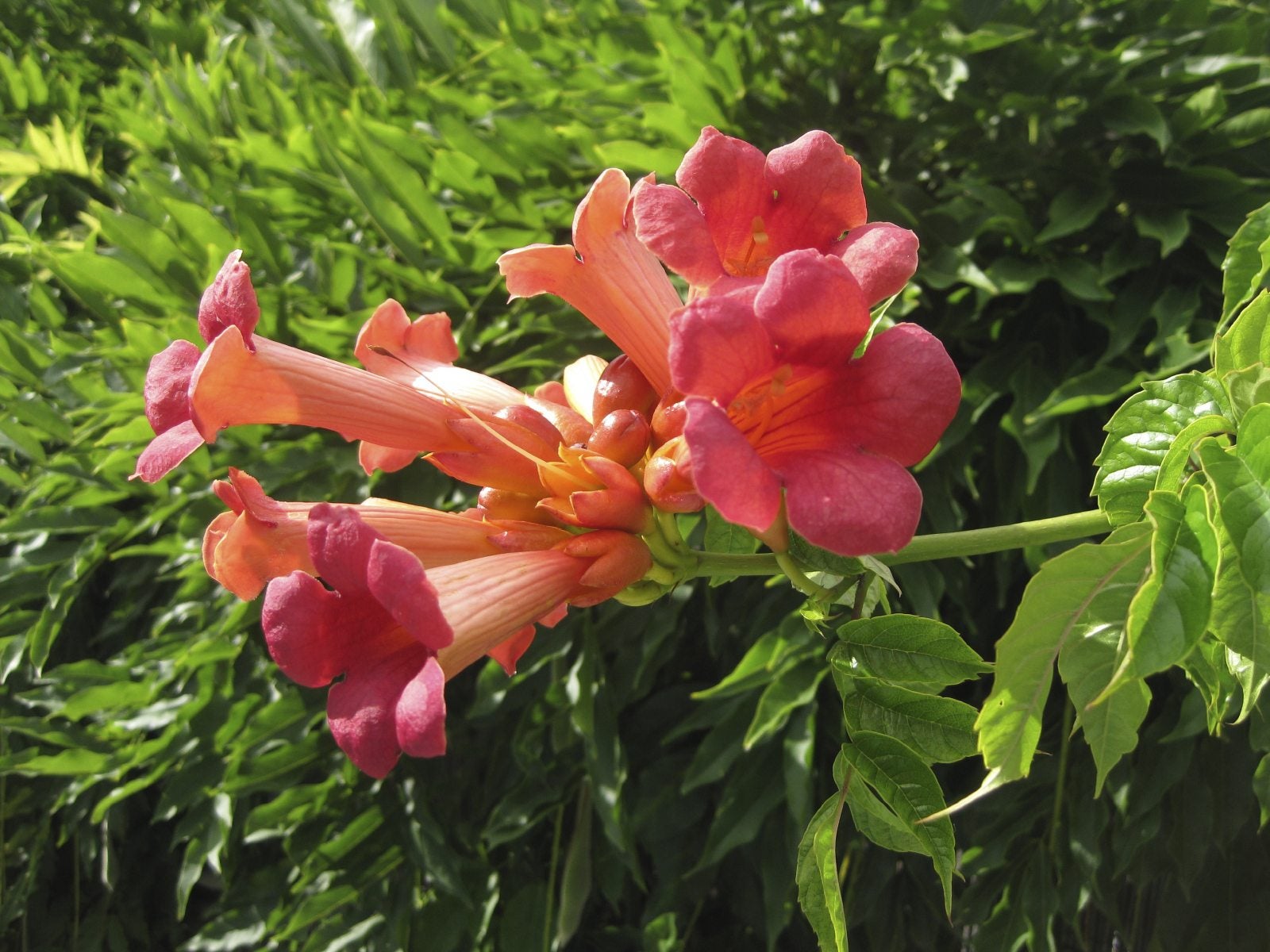Trumpet Vine Feeding: Learn When And How To Fertilize Trumpet Vines


Plants called "trumpet vine" are usually those scientifically known as Campsis radicans, but Bignonia capreolata also travels under the common name of its cousin trumpet vine, though is better known as crossvine. Both plants are easy to grow, low care vines with bright, trumpet-shaped flowers. If you are growing these flowers, you will need to understand when and how to fertilize trumpet vines. Read on for information about how and when to fertilize a trumpet vine.
Trumpet Vine Feeding
Trumpet vines thrive in USDA plant hardiness zones 4 through 9. Generally, the vines grow fast and require a strong structure to keep them where you want them to be. Most soil contains sufficient nutrients for trumpet vine plants to grow happily. In fact, you are likely to spend more time trying to keep these vines a manageable size than worrying that they aren’t growing fast enough.
When to Fertilize a Trumpet Vine
If you notice that the trumpet vine’s growth seems slow, you can consider fertilizing trumpet vine. If you are wondering when to fertilize a trumpet vine, you can start applying fertilizer to trumpet vine in the spring if the low growth rate warrants it.
How to Fertilize Trumpet Vines
Start fertilizing trumpet vine by sprinkling 2 tablespoons (30 ml.) of 10-10-10 fertilizer around the root area of the vine. Be careful of overfertilizing, however. This can prevent flowering and encourage the vines to grow aggressively. If you do see excess growth, you should prune back trumpet vines in the spring. Cut the vines so that the tips are no more than 12 to 24 inches (31-61 cm.) above the ground. Since trumpet vines are the type of plant that produces flowers on new growth, you do not have any risk of destroying next year’s blossoms by pruning in spring. Rather, a hard pruning in spring will encourage lush growth at the bottom of the plant. This will make the vine appear healthier and allow for more flowering during the growing season.
Fertilizing Trumpet Vines Won’t Necessarily Help the Plant Flower
If your trumpet vine isn’t flowering, you need to have patience. These plants must reach maturity before they blossom, and the process can be a long one. Sometimes, vines need five or even seven years before they flower. Pouring fertilizer for trumpet vines on the soil won’t help the plant flower if it is not yet mature. Your best bet is to make sure the plant is getting direct sun every day and avoiding high nitrogen fertilizers since they encourage foliage growth and discourage blossoms.
Gardening tips, videos, info and more delivered right to your inbox!
Sign up for the Gardening Know How newsletter today and receive a free copy of our e-book "How to Grow Delicious Tomatoes".

Teo Spengler is a master gardener and a docent at the San Francisco Botanical Garden, where she hosts public tours. She has studied horticulture and written about nature, trees, plants, and gardening for more than two decades. Her extended family includes some 30 houseplants and hundreds of outdoor plants, including 250 trees, which are her main passion. Spengler currently splits her life between San Francisco and the French Basque Country, though she was raised in Alaska, giving her experience of gardening in a range of climates.
-
 Looking For Plants To Give You The Soft And Fuzzies? Try These 5 Fuzzy Leaf Plant Options
Looking For Plants To Give You The Soft And Fuzzies? Try These 5 Fuzzy Leaf Plant OptionsLovers of texture, drama, silver foliage and tactile plants will adore these special sensory garden additions. These fuzzy leaf plant options will leave you all aglow
By Susan Albert
-
 Get Ready For A Summer Of Hummers! Grow These Full Sun Hummingbird Plants and Flowers
Get Ready For A Summer Of Hummers! Grow These Full Sun Hummingbird Plants and FlowersIf you’re lucky enough to enjoy a sunny backyard, make sure you are maxing out on your pollinator opportunities and grow these full sun hummingbird plants and flowers
By Tonya Barnett